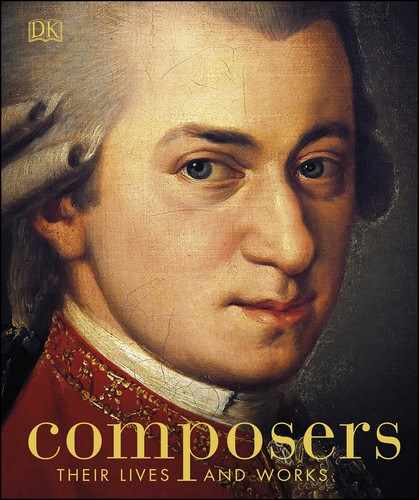Guillaume Dufay
c.1397–1474, FRENCH
The foremost composer of the Burgundian School in the 15th century, Dufay perfected his craft while working in Italy, developing an elegant style that bridged the transition from medieval to Renaissance.

PORTRAIT OF A YOUNG MAN
This portrait by the Flemish artist Jan van Eyck, c. 1432, is generally believed to be of Dufay when he was in his thirties.
IN PROFILE
Philip the Good
The court of the dukes of Burgundy was famous for its patronage of the arts, in particular during the reign of Philip III (known as Philip the Good), from 1419 to his death in 1467. Under his benevolent and liberal rule, Flemish artists such as Jan van Eyck flourished, and Franco-Flemish composers, including Dufay and Gilles Binchois (both almost exact contemporaries of the duke), established an influential “school” of composition, which also attracted musicians from England and France.

PHILIP III OF BURGUNDY, AFTER ROGIER VAN DER WEYDEN, c. 1445
The illegitimate son of a priest, Guillaume Dufay was probably born in 1397 in Beersel, near Brussels (then in the Burgundian Netherlands). His father’s identity remains unknown. Guillaume was brought up by his mother, and adopted her name of Du Fayt, later also spelled Du Fay or Dufay.

MUSICAL CODEX, 1420s
An early-15th-century illuminated page from a manuscript written by Dufay that is an important source for his early works.
While Guillaume was still a child, he moved with his mother to Cambrai to live with a relative who was a canon at the cathedral. In 1409, through this connection, he became a cathedral chorister and began his musical education in earnest. He rose through the ranks of the clergy to become a subdeacon.
Travels in Italy
In 1420, Dufay traveled to Italy to take up a post in the service of the Malatesta family in Rimini. This allowed him to further his career in the Church and to broaden his musical horizons, coming into contact with the latest developments of the nascent Italian Renaissance musical style.
From Rimini, he moved to Bologna, where he was ordained as a priest in 1428, and then went on to Rome to join the papal choir. By this time, he had made a name for himself as a composer and managed to secure a series of prestigious posts: maître de chapelle (choirmaster) in the court of Savoy, under Duke Amédée VIII (later Antipope Felix V); then at the papal chapel in Florence; and finally in the service of the Este family in Ferrara.
Throughout the 1430s, political turmoil between the papacy and the Council of Basel rocked the Catholic Church, and Dufay’s position in Italy became insecure. In about 1440, he returned to Cambrai to supervise music at the cathedral, and also made connections with the court of Philip the Good of Burgundy (see box).
A new style of music
Dufay was considered to be one of the finest composers in Europe at that time, known for both his sacred and his secular compositions. He pioneered the composition of complete Masses based on a single chant or melody (“cyclical” Masses)—often the tune of a popular secular song, or one of his own chansons. With his colleague Gilles Binchois, he established a highly distinctive Burgundian early-Renaissance style, moving away from the austerity of medieval music and introducing the lyricism of Italian melodies, as well as the contenance angloise, or “English manner”—the sweeter harmonies of English composers such as John Dunstaple.
Dufay still had hopes of settling in Italy, and in 1449 he went back to Turin and Savoy in search of a post for his retirement years. However, the political situation was still volatile, so he returned to the Burgundy court in Cambrai again in 1458 and, thanks to a degree in canon law conferred on him by the pope while in Turin, he was also made a canon at Cambrai cathedral. Dufay then remained in Cambrai until his death in 1474.
“ If my face is pale, the cause is love.”
GUILLAUME DUFAY, IN THE SONG “IF MY FACE IS PALE”
